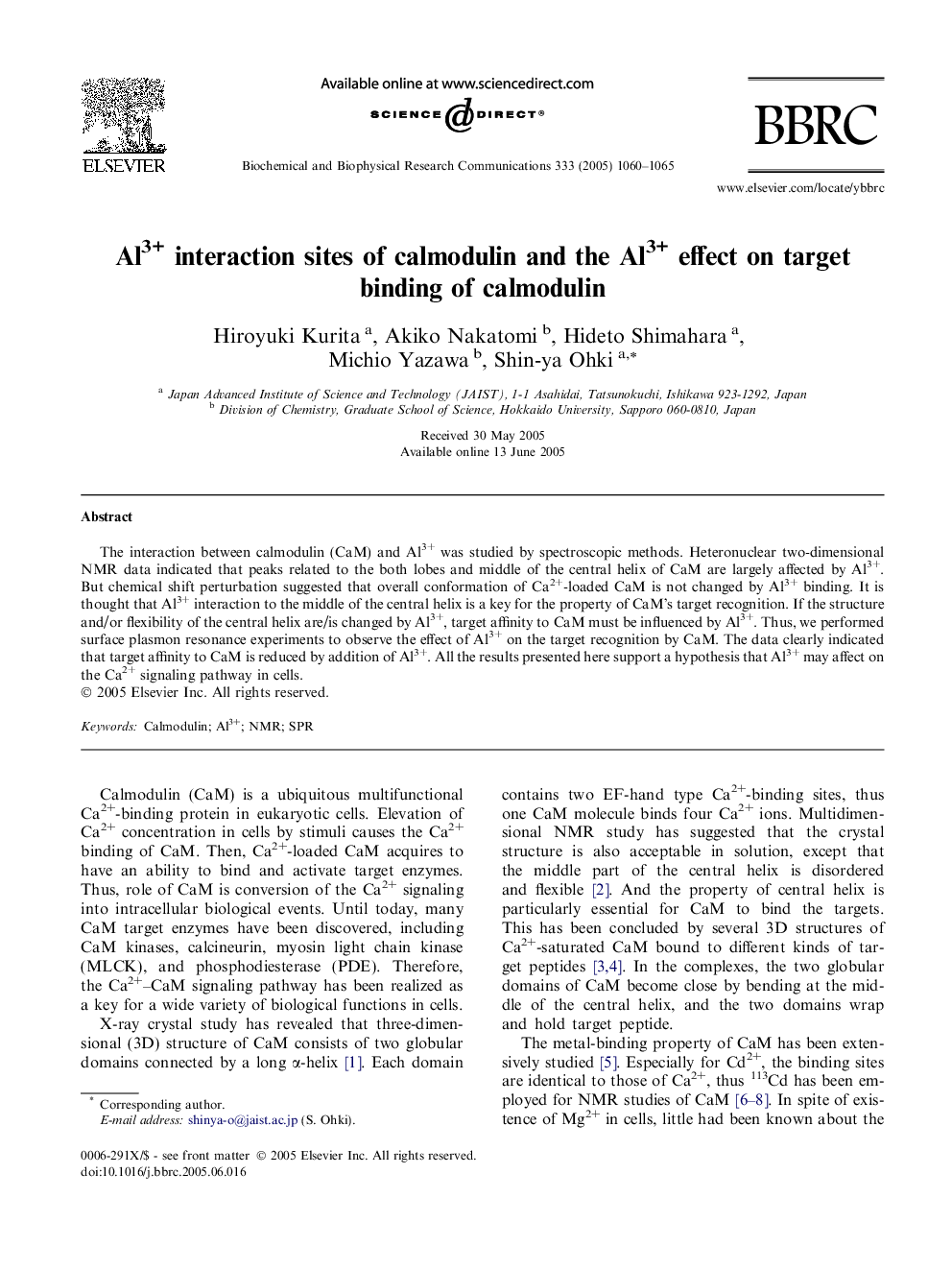| Article ID | Journal | Published Year | Pages | File Type |
|---|---|---|---|---|
| 10768537 | Biochemical and Biophysical Research Communications | 2005 | 6 Pages |
Abstract
The interaction between calmodulin (CaM) and Al3+ was studied by spectroscopic methods. Heteronuclear two-dimensional NMR data indicated that peaks related to the both lobes and middle of the central helix of CaM are largely affected by Al3+. But chemical shift perturbation suggested that overall conformation of Ca2+-loaded CaM is not changed by Al3+ binding. It is thought that Al3+ interaction to the middle of the central helix is a key for the property of CaM's target recognition. If the structure and/or flexibility of the central helix are/is changed by Al3+, target affinity to CaM must be influenced by Al3+. Thus, we performed surface plasmon resonance experiments to observe the effect of Al3+ on the target recognition by CaM. The data clearly indicated that target affinity to CaM is reduced by addition of Al3+. All the results presented here support a hypothesis that Al3+ may affect on the Ca2+ signaling pathway in cells.
Keywords
Related Topics
Life Sciences
Biochemistry, Genetics and Molecular Biology
Biochemistry
Authors
Hiroyuki Kurita, Akiko Nakatomi, Hideto Shimahara, Michio Yazawa, Shin-ya Ohki,
